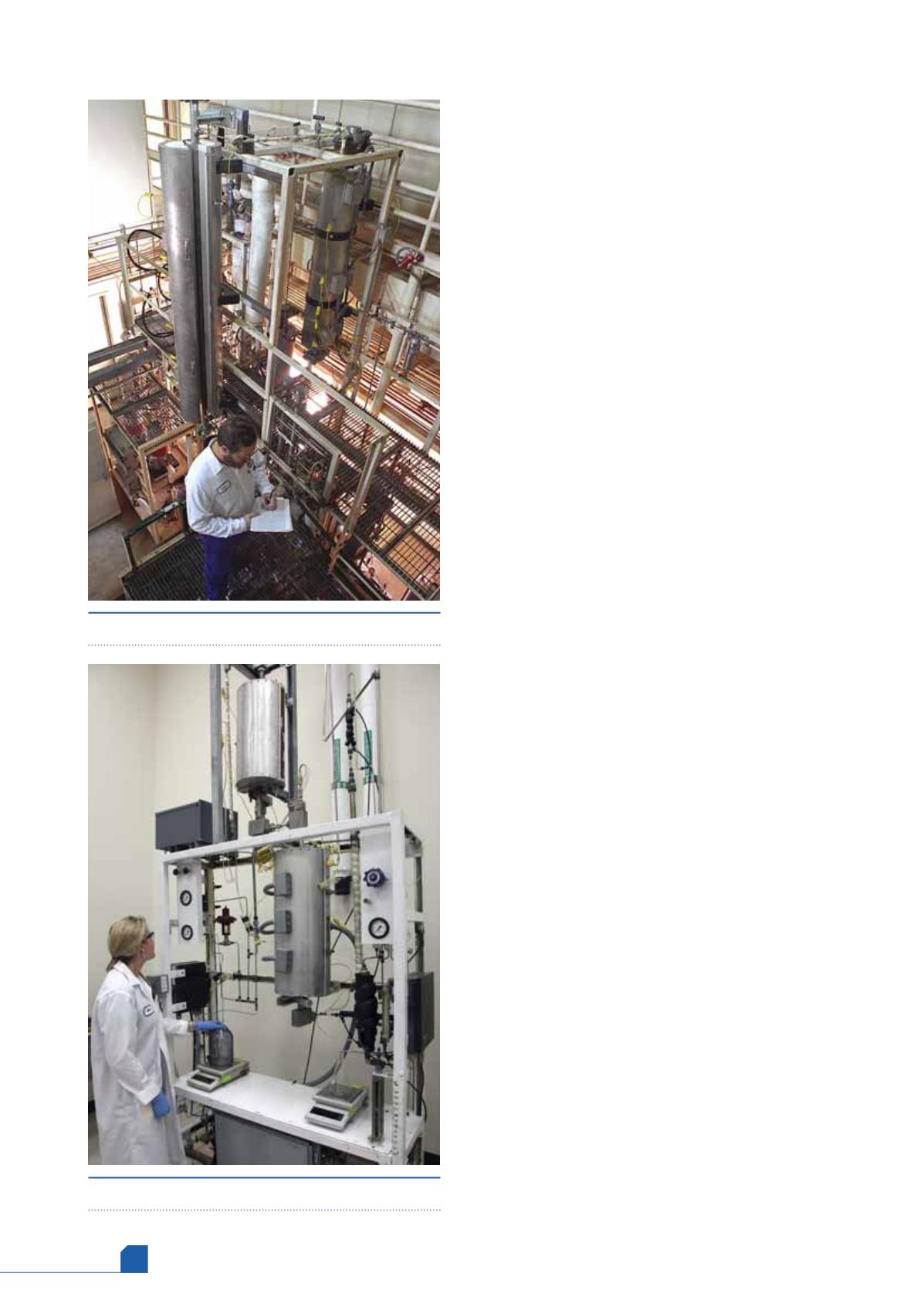
March
2017
HYDROCARBON
ENGINEERING
86
technology as applied to biofeedstocks. In this article,
three cases will illustrate some of the pilot-scale process
development steps, and reveal the lessons learned and
benefits that were achieved.
Algae oil processing
Algal oil is a promising feedstock, due to its renewable
nature and origin in a flowable biofarm slurry medium for
extraction and processing of the algal oil product. Algae
has limitations of high oxygen content in the fatty acids
cleaved from the triglycerides that make up the oil.
Furthermore, the subsequent paraffins produced are in the
molecular weight range that freezes at temperatures above
many fuel specifications. In this example, the proposed
processing scheme used a commercial catalyst to
hydrodeoxygenate the oil, followed by hydroisomerisation
of the paraffins produced to lower the freezing point,
before distilling the product into the target flash point and
end point temperatures.
Preparing the catalyst with hydrogen to convert the
stable oxide catalyst to the active form, followed by
sulfiding, was easily accomplished. The processing
objective, which required production of a trial quantity of
the product, was well matched to an 8 l reactor pilot
plant that was not as efficient for exploring the operating
conditions needed for processing. For that work, a 0.1 l
pilot plant was used, which could quickly change
conditions and required much less feedstock to
determine space velocity, operating temperature, and
pressure for the production run. Thus, with less operating
time focused on the small unit, the optimal conditions
were selected.
When the processing in the larger pilot plant
commenced, there was a rapid increase in the gas-make
that was traced to a rapid drop in space velocity. After
mechanical causes were eliminated, a plugging of the
reactor bed in the preheat section, packed with inert
alumina, was found to be the cause. Switching to another
alumina slowed the plugging, but did not eliminate it.
Literature was discovered that suggested that alumina
alone was active for the fatty acid hydrogenation, hence
the reaction in the preheat zone. A high concentration of
phosphorus in the deposits were discovered, which
suggested that unfilterable extraneous cellular content
from the algae was participating in the plugging.
A dilution of the feedstock and a disruption to the
plugging was attempted by tapping the reactor to
dislodge or redistribute the alumina at the top of the bed.
Thus, through a combination of approaches, the
sequential processing required to make a trial batch of oil
that met specification was completed. However, the best
means to ensure that commercial production would be
free of the plugging problem was left unresolved.
Ethanol oligomerisation
Ethanol produced from the fermentation or hydrolysis of
cellulose is a sustainable feedstock, one that is quite
versatile as a component of gasoline or as a synthetic
starting point for other products. As a reactive green
feedstock, it is attractive. However, it is hygroscopic,
Figure 1.
The 8 l reactor fixed-bed pilot plant.
Figure 2.
The 0.1 l reactor pilot plant.








